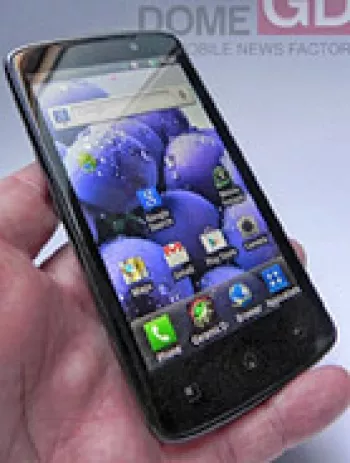
Overview of LG GX500
The LG GX500 was a feature phone released in April 2010, offering a blend of functionality and basic smartphone features of its time. It's a dual SIM device, allowing users the flexibility of carrying two phone numbers simultaneously, which was a highly valued convenience for many users during that period.
Network and Connectivity
The device operates on GSM technology, which was the standard worldwide for feature phones at the time. The phone supports various 2G bands including GSM 850, 900, 1800, and 1900 on SIM 1. Internet connectivity was provided through GPRS and EDGE technology, which were standard for phone internet connections before the widespread adoption of 3G and 4G technologies.
Launch and Availability
Announced in April 2010, the LG GX500 was discontinued shortly after its release. Despite its brief availability, it managed to leave a mark as a reliable feature phone option for users who required dual SIM functionality along with basic multimedia features.
Body and Design
In terms of design, the LG GX500 features dimensions of 108.9 x 53.4 x 13 mm and weighs 118 grams, making it quite compact and lightweight. It features a dual SIM slot which was a standout feature, catering to the needs of users who required the convenience of managing two numbers. The overall design was typical of feature phones at the time — compact, functional, and slightly robust.
Display
The phone is equipped with a 3.0-inch TFT resistive touchscreen that supports 256K colors. The resolution stands at 240 x 400 pixels, offering a pixel density of approximately 155 ppi. While not as sharp as modern displays, it was sufficient for the usage standards at the time, providing a user-friendly interface and decent visibility for basic tasks.
Memory and Storage
Internally, the LG GX500 offers 40MB of storage which was standard for feature phones. To accommodate larger storage needs, it includes a microSDHC card slot, allowing for memory expansion. Users could store up to 1000 contacts in the phonebook with photocall functionality, and call records were also maintained for convenience.
Camera Capabilities
The main camera of the LG GX500 is a 3.15 MP shooter featuring autofocus. It allows for basic photography suited for everyday moments. The camera supports video recording at 320p @ 15fps. While it lacks a front-facing camera, the quality was adequate for the period it was released in.
Audio and Sound
The device includes a loudspeaker for media playback which can be quite useful for hands-free conversations or listening to music. However, it lacks a 3.5mm audio jack, which might be limiting for users looking to use traditional headphones. Stereo FM radio with RDS and recording capabilities offers additional auditory entertainment.
Connectivity Features
Wi-Fi capabilities (802.11b/g), Bluetooth 2.1 with A2DP, and a microUSB 2.0 port are included in the connectivity suite. Despite lacking GPS positioning features, the phone offers essential connectivity options. The Bluetooth functionality allows for wireless communication with other devices, such as wireless headsets and file transfers.
Additional Features
It comes equipped with an accelerometer sensor which is used in a limited capacity for gaming and screen rotation functions. The messaging options include SMS with threaded view, MMS, email, and push email, making it versatile for communication. The phone supports HTML and WAP 2.0/xHTML browsing, and users could indulge in Java-based games and applications, as the device supports MIDP 2.0.
Battery Life
Fueled by a removable Li-Po 1500 mAh battery, the LG GX500 promises impressive battery life for a feature phone. Its standby time is up to 400 hours, and the talk time extends to 9 hours and 30 minutes. These specifications ensured users could rely on their phones throughout the day without frequent recharging, a priority for many during its time.
Miscellaneous
The phone's SAR value is recorded at 1.28 W/kg for the head and 0.35 W/kg for the body. It was available in black color, appealing to users who preferred classic and understated designs. Upon its release, it was priced around 110 EUR, positioning it as a mid-range choice for consumers seeking both affordability and reasonable features.
Conclusion
Overall, the LG GX500 marked a significant period in mobile phone evolution, combining basic multimedia and connectivity features with the convenience of a dual SIM configuration. While its specifications may seem primitive compared to modern smartphones, it remains a nostalgic choice for those who valued reliability and simplicity before the smartphone era fully took hold.
Key Features of LG GX500
- Dual SIM capability with dual stand-by
- 3.0 inches resistive touchscreen with 256K colors
- Wi-Fi connectivity (802.11b/g)
- Stereo FM radio with RDS and recording
- 3.15 MP main camera with autofocus
- Expandable storage with microSDHC card slot
- Long battery life with removable 1500 mAh Li-Po battery
- Bluetooth 2.1 with A2DP support
- Affordable price point, around 110 EUR
LG GX500 Disadvantages
- Lacks 3G and 4G connectivity; limited to 2G GSM technology.
- Discontinued status, meaning no official support or updates.
- Resistive touchscreen technology, which is less responsive compared to capacitive touchscreens.
- Low screen resolution of 240 x 400 pixels results in modest display clarity.
- Limited internal memory of 40MB, which might require frequent external storage usage.
- 3.15 MP camera with no advanced features and mediocre video recording at 320p@15fps.
- No front-facing camera for selfies or video calls.
- Lacks 3.5mm audio jack, requiring adapters for wired headphones.
- No GPS positioning functionality, limiting navigation capabilities.
- Limited app ecosystem compared to smartphones with modern operating systems.


View Also
More Phones
All Rights Reserved +14267 Phones © Mobilawy 2025

























